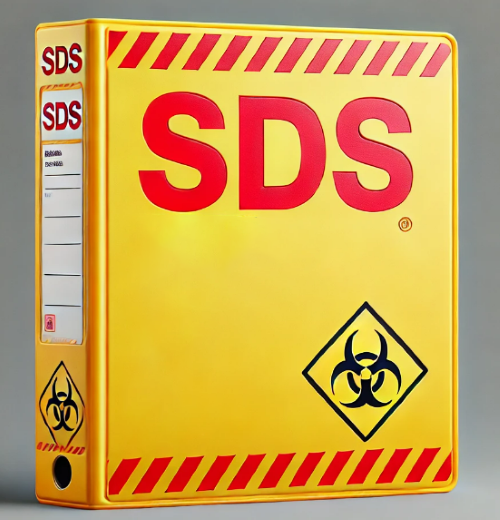MSDS Of Dysprosium
Identity: Dysprosium
Formula: Dy
SECTION I - GENERAL INFORMATION
Manufacturer: Stanford Advanced Materials (SAM)
The following information is compiled to the best of our knowledge and represents the most accurate data provided by SAM. However, SAM does not offer any expressed or implied warranty concerning this information and accepts no liability for any consequences arising from its use.
SECTION II - HAZARDOUS SUBSTANCES/IDENTITY INFORMATION
Molecular weight: 162.50
CAS No.: 7429-91-6
OSHA PEL: N/A
ACGIH TLV: 10 mg/m³
Percentage: 100%
SECTION III - PHYSICAL/CHEMICAL PROPERTIES
Physical state: Solid
Boiling point: 2600.0°C, Vapor pressure (against air or mmHg): N/A
Melting point: 1407.0°C
Density: 8.54 g/cm³
Evaporation rate: N/A
Flash point: N/A
Solubility in water: Insoluble
Appearance and odour: Silver pieces and powder, odourless
SECTION IV - FIRE AND EXPLOSION HAZARD INFORMATION:
Method utilised: Ignitable
Explosive limits: LEL: N/A, UEL: N/A
Fire extinguishing media:
Dry chemical, Class D fire extinguisher, DO NOT USE WATER
Special fire-fighting measures:
Firefighters must wear a self-contained breathing apparatus with full protective clothing to avoid contact with skin and eyes. Fire effluents are hazardous. Isolate drainage thereby preventing environmental contamination.
Unusual fire and explosion hazards:
Avoid dust formation, given that the dust form of this product may cause a dust explosion.
SECTION V - REACTIVITY DATA
Stability: Stable
Conditions to avoid (stability): Air, moisture and substances that may form dust
Incompatibilities: Strong acids, strong oxidising materials, halogens, water, moisture and air
Hazardous decomposition or by-products: On contact with water, extremely flammable gases are released
Dangerous polymerisation: Does not occur
Conditions to avoid (hazardous polymerisation): None
SECTION VI - HEALTH HAZARD INFORMATION
Health hazards (acute and chronic):
Inhalation: Harmful if inhaled; causes irritation of the respiratory tract
Ingestion: Exhibits low toxicity, but oral intake may be harmful
Skin: May cause irritation, rash and itching
Eyes: May cause redness, itching and tearing
Carcinogenicity: NTP? No
IARC monographs? No
OSHA regulated? No
Medical conditions exacerbated by exposure: Pre-existing dust allergies
Emergency and first aid measures:
Inhalation: Remove the individual to fresh air, keep them warm and calm, and administer oxygen if breathing difficulties occur; seek medical advice
Ingestion: Provide 1–2 glasses of milk or water and induce vomiting; seek medical advice. Do not induce vomiting or give any substance orally to an unconscious person.
Skin: Remove contaminated clothing, brush the material from the skin, wash the affected area with mild soap and water and seek medical advice if symptoms persist
Eyes: Rinse eyes with lukewarm water, holding the upper and lower lids apart for at least 15 minutes; seek medical advice.
SECTION VII - PRECAUTIONARY MEASURES FOR SAFE HANDLING AND USE
Measures in case of accidental release or spillage:
Wear appropriate respiratory and protective equipment as described in Section VIII. Isolate the spill area, provide adequate ventilation and eliminate ignition sources. Collect the spilled material with a HEPA air filter and transfer it to a sealed container for proper disposal. Ensure that dust is not disturbed.
Disposal procedures:
Dispose of the material in accordance with state, local and federal regulations.
Information on hazard signage:
Store in a cool, dry place in a tightly closed container. Wash thoroughly after handling.
Other:
Store under argon (Ar) or in another inert atmosphere.
SECTION VIII - CONTROL MEASURES
Summary of personal protective equipment (information on the hazard signage):
NIOSH-approved respirator, impermeable gloves, safety goggles, and clothing to prevent contact
Ventilation:
Local exhaust ventilation: To maintain exposure concentrations at low levels
Mechanical (general): Recommended
Work/Hygiene/Maintenance practices:
Technical and occupational health measures should be implemented to reduce exposure levels and maintain them at a low concentration. Adhere to sound housekeeping and hygiene practices. Do not smoke or eat in the work area. Wash thoroughly before eating or smoking. Do not dislodge dust from clothing or skin using compressed air.
Please note that "N/A" may indicate either "Not Applicable" or "No Data Available".

 Bars
Bars
 Beads & Spheres
Beads & Spheres
 Bolts & Nuts
Bolts & Nuts
 Crucibles
Crucibles
 Discs
Discs
 Fibers & Fabrics
Fibers & Fabrics
 Films
Films
 Flake
Flake
 Foams
Foams
 Foil
Foil
 Granules
Granules
 Honeycombs
Honeycombs
 Ink
Ink
 Laminate
Laminate
 Lumps
Lumps
 Meshes
Meshes
 Metallised Film
Metallised Film
 Plate
Plate
 Powders
Powders
 Rod
Rod
 Sheets
Sheets
 Single Crystals
Single Crystals
 Sputtering Target
Sputtering Target
 Tubes
Tubes
 Washer
Washer
 Wires
Wires
 Converters & Calculators
Converters & Calculators
 Write for Us
Write for Us


 Chin Trento
Chin Trento


